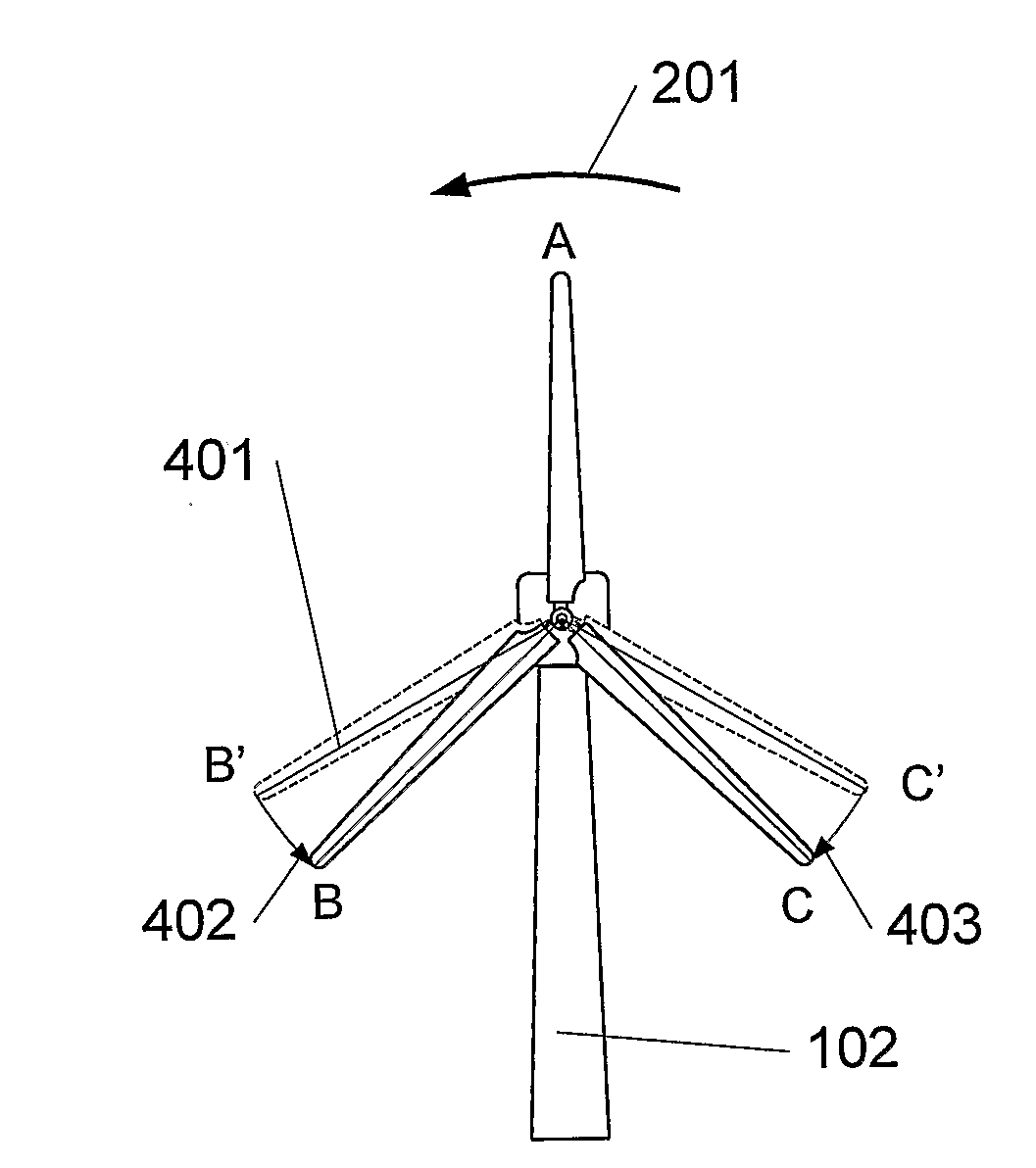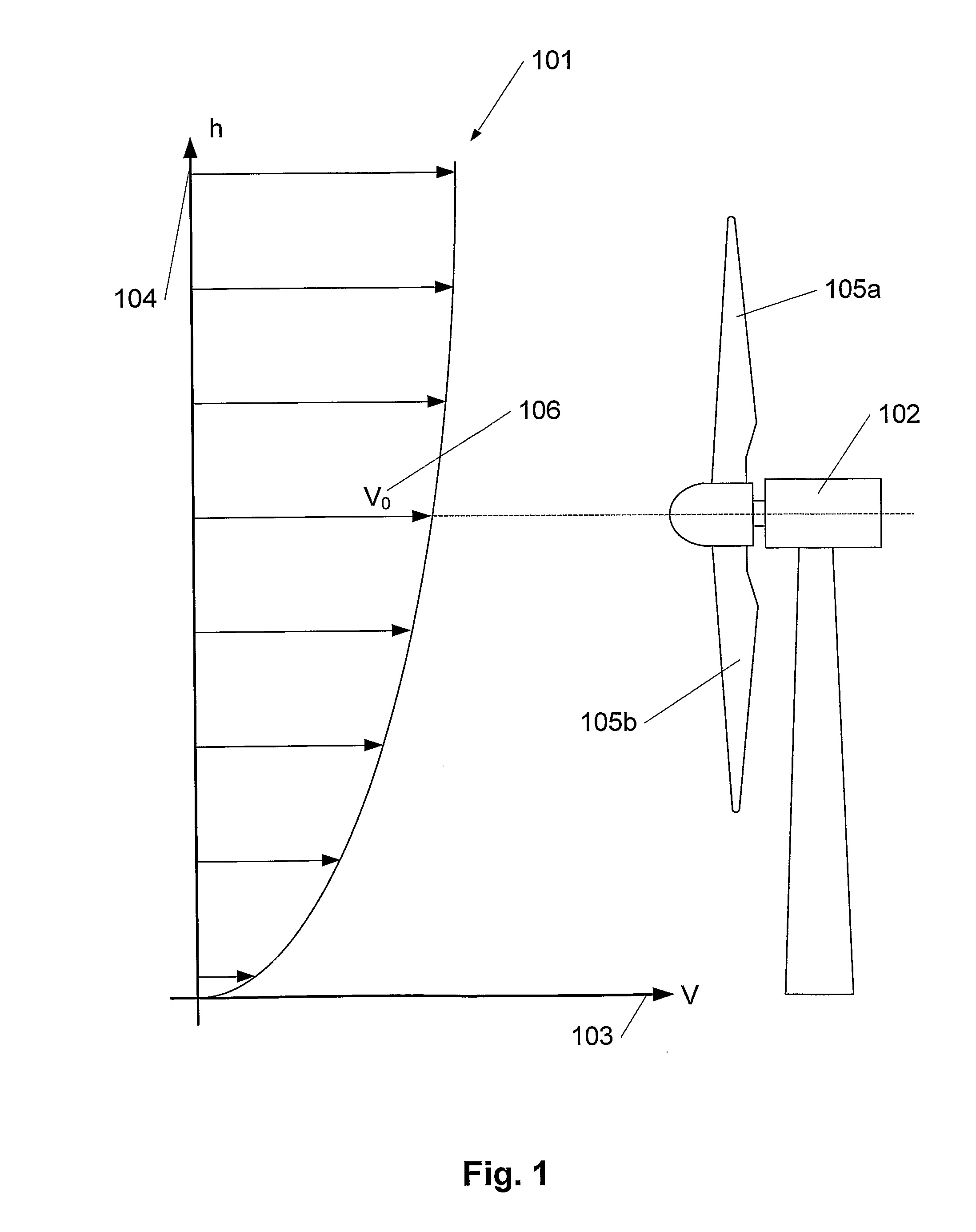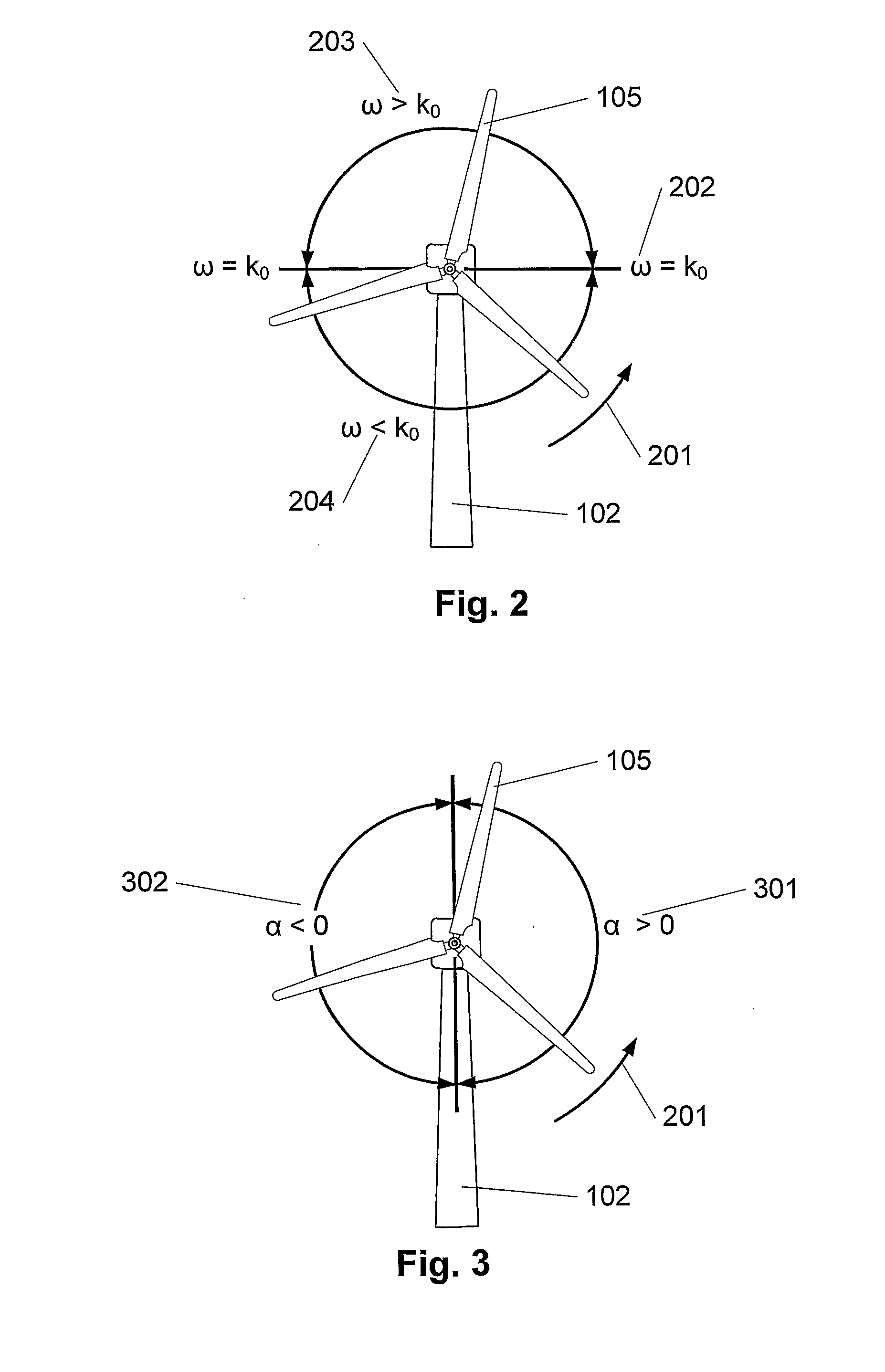Variable Speed Hub
a variable speed, hub technology, applied in the direction of propellers, engine control parameters, water-acting propulsive elements, etc., can solve the problems of hub force, inability to optimally use the power of the wind, tendency to go too fast, etc., to achieve the effect of optimizing the blade speed
- Summary
- Abstract
- Description
- Claims
- Application Information
AI Technical Summary
Benefits of technology
Problems solved by technology
Method used
Image
Examples
Embodiment Construction
[0027]FIG. 1 illustrates a wind profile (101) in front of a wind turbine (102). The speed of the wind, V, is indicated on the horizontal axis (103), whereas the height, h, above ground level is indicated on the vertical axis (104). The shape of the wind profile depends on the terrain in which the profile is to describe the wind, but it applies in general that the speed of the wind is increased when the height increases. Therefore the individual blades of the wind turbine will be influenced by different wind speeds in response to where in the rotation cycle the blade (105a, 105b) is located. Thus, the uppermost blade (105a) experiences a higher speed of wind than the lowermost blade (105b). The speed of the wind at the same height as the hub of the wind turbine is designated V0 (106). In order to use as much power of the wind as possible, each individual blade tip speed is to be adjusted proportionally with the speed of the wind. Therefore, in this invention, the blades in the wind t...
PUM
 Login to View More
Login to View More Abstract
Description
Claims
Application Information
 Login to View More
Login to View More - R&D
- Intellectual Property
- Life Sciences
- Materials
- Tech Scout
- Unparalleled Data Quality
- Higher Quality Content
- 60% Fewer Hallucinations
Browse by: Latest US Patents, China's latest patents, Technical Efficacy Thesaurus, Application Domain, Technology Topic, Popular Technical Reports.
© 2025 PatSnap. All rights reserved.Legal|Privacy policy|Modern Slavery Act Transparency Statement|Sitemap|About US| Contact US: help@patsnap.com



